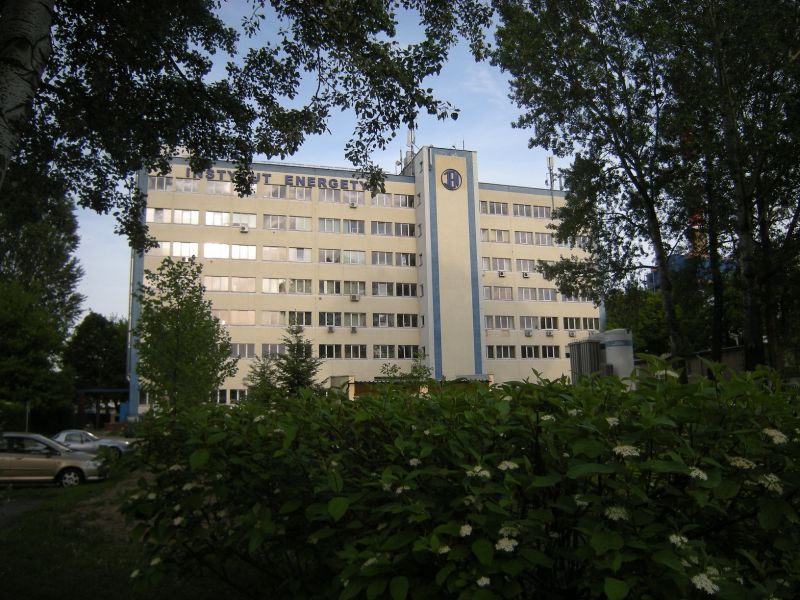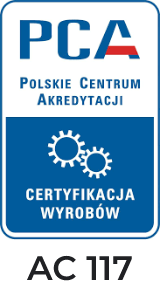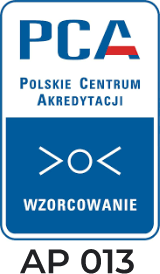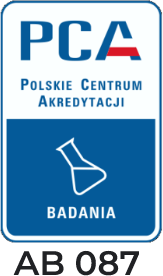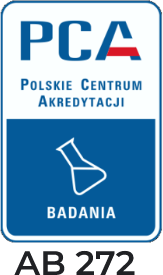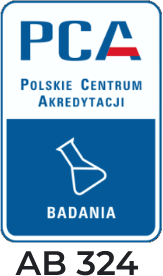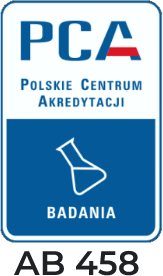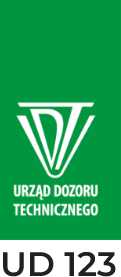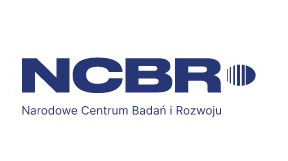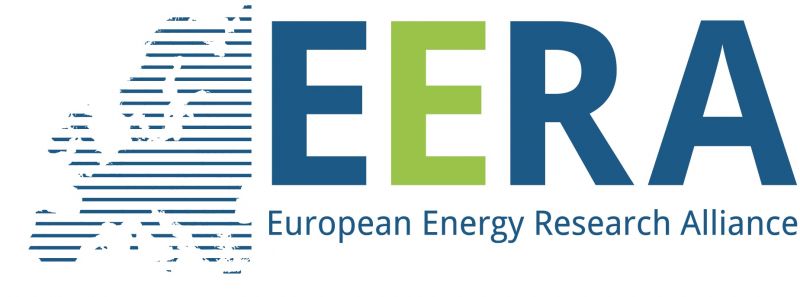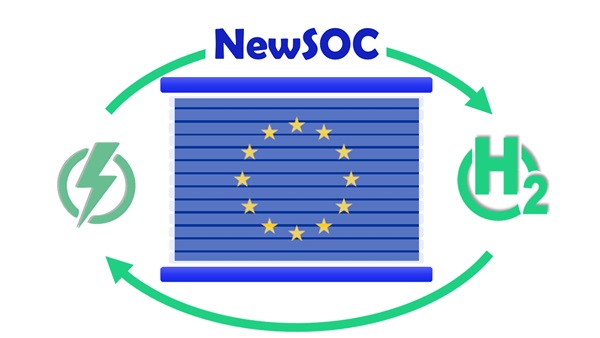Instytut Energetyki
What is the Power Engineering Equipment Research Department?
The Department has more than 40 years of experience in testing boilers, burners and heating equipment fired by solid fuels. The Department also provides consulting and expert services in the above-mentioned field. The Department's clients are domestic and foreign (Germany, Latvia) principals. The Department cooperates with manufacturers affiliated with the Chamber of Commerce of Renewable Energy Equipment.
What does the Power Engineering Equipment Research Department do?
The Power Engineering Equipment Research Department's more than 40 years of experience in the design and testing of heating equipment enables us to:
- design and modernization of low-power heating equipment (up to 1 MW),
- rental of a measuring station (with or without an operator),
- testing of pellet burners,
- testing of capacity water heaters according to PN-EN 12897+A1:2020-03,
- testing of hot water storage tanks,
- testing of other low-power heating devices (e.g. air heaters).
- residential solid fuel burning appliances according to PN-EN 16510 series of standards
- thermo-emission tests in the combustion of alternative fuels,
- conducting research and development in the power industry of low-power heating devices (up to 1 MW).
As part of the Department of Power Equipment Testing, there is an Accredited Laboratory (No. AB 087), which performs testing of boilers and equipment for solid fuels. It is the only laboratory in Poland accredited to test heating boilers with thermal power up to 1 MW. Obtaining a positive result of thermal-emission tests for compliance with PN-EN 303-5:2021-09 and/or PN-EN 303-5+A1:2023-05 fulfills the requirements of the European Commission Regulation (EU) 2015/1189 of April 28, 2015 on the implementation of Directive 2009/125/EC of the European Parliament and of the Council with regard to ecodesign requirements for solid fuel boilers allows boilers to be marketed in the territory of the European Union.
Within the framework of accreditation and notification No. 1452, the assessment and verification of constancy of performance of products (AVCP Assessment and Verification of Constancy of Performance, system3) is carried out according to the Regulation of the European Parliament and of the Council (EU) No. 305/2011 of March 9, 2011. (CPR) establishing harmonized conditions for the marketing of construction products and repealing Council Directive 89/106/EEC according to harmonized standards:
- solid fuel space heaters according to PN-EN 13240:2008,
- fireplace inserts for solid fuels PN-EN 13229:2002,
- cookers for solid fuels PN-EN 12815:2004,
- accumulation space heaters according to PN-EN 15250:2009,
- pellet-fired space heaters according to PN-EN 14785:2009.
Meeting the requirements of the above standards during the assessment of the notified body, together with documented factory production control, allows the equipment to be placed on the market in the territory of the European Union.
Boiler and Heating Equipment Testing Laboratory offers accredited testing:
- room heaters according to PN-EN 16510-2-1:2023-06,
- built-in appliances, including those with open fires (fireplace inserts) according to PN-EN 16510-2-2:2023-06,
- room heaters, built-in appliances and stoves with mechanical feeding of wood pellets according to PN-EN 16510-2-6:2023-06,
- solid fuel boilers according to PN-EN 303-5:
- space heaters according to PN-EN 13240:2008,
- fireplace inserts according to PN-EN 13229:2002,
- solid fuel cookers according to PN-EN 12815:2004,
- storage space heaters according to PN-EN 15250:2009,
- pellet-fired space heaters according to PN-EN 14785:2009.
If you are interested in our offer, please fill out the inquiry form and send a scan of it to the following email address:
Why should you choose our services?
The Power Engineering Equipment Research Department has an experienced team of experts that offers comprehensive services in the field of testing boilers, burners and heating equipment fired by solid fuels.The Department has a Laboratory that has an accreditation certificate from the Polish Accreditation Center No. AB 087 - registration card. The Department has references from companies such as:
- Defro
- Hamech
- Lazar
- Moderator
|
Power Engineering Equipment Research Department LG ul. Dostawcza 1 93-231 Łódź mobile: +48 42 64 00 821 |
Head of the Department Karolina Tomczyk - Karasek, Eng, MSc mobile: +48 609 799 455 |
What is the Department of High Temperature Electrochemical Processes?
The Department of High Temperature Electrochemical Processes (CPE) is an interdisciplinary team consisting of specialists and experts from the fields of energy, chemical engineering, materials engineering, process engineering and related areas. The unit's activities focus on the development of hydrogen technologies, with particular emphasis on the topic of solid oxide electrochemical cells (SOC, or Solid Oxide Cell), which represent a promising solution in the context of decarbonization of hard-to-electrify areas of the economy. 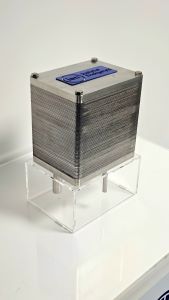
What does the Department of High Temperature Electrochemical Processes do?
We carry out numerous projects involving work in the nature of research, development and implementation, as well as commercial contracts for the supply of fixed-oxide cell installations. We are also open to cooperation in which our team of specialists will advise and prepare solutions tailored to individual customers including: business entities, central administration, international and foreign institutions in the field of:
- highly efficient generation of electricity and heat by electrochemical processes - fuel cell mode (SOFC mode),
- production of zero-emission hydrogen and derivatives (including CO2 utilization) by high-temperature electrolysis and co-electrolysis (SOE and co-SOE modes, respectively), also taking into account ammonia (NH3), as a pure hydrogen carrier,
- Power-to-X and X-to-Power solutions,
- storage of electricity, heat and in other forms, among others, using reversible rSOCs (SOE-SOFC switching mode),
- numerical calculations and computer simulation of electrochemical and chemical processes and power plants,
- design and construction of power systems,
- technical consulting in the field of new hydrogen technologies and the broader power industry.
Download FAQ
Why should you choose our services?
We have a unique laboratory infrastructure for studying electrochemical processes from the level of individual cells and components to complete energy systems based on SOC cells of different functionality and dedicated size. CPE team members also apply proprietary and unique solutions used in numerical studies and modeling of complex hydrogen-based processes and systems.
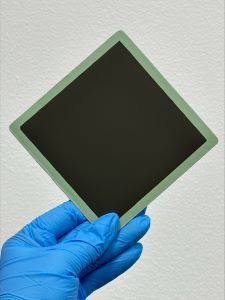 We apply global standards for characterization of solid oxide cells. We cooperate with leading European and global institutions, including universities, research institutions and directly with industry. The team bases its experience on numerous projects funded by the European Commission, the U.S. Department of State (DoS), the U.S. Department of Energy (DoE), the National Center for Research and Development (NCBR), the National Science Center (NCN), the Ministry of Science and Higher Education (MNiSW) and directly by industry.
We apply global standards for characterization of solid oxide cells. We cooperate with leading European and global institutions, including universities, research institutions and directly with industry. The team bases its experience on numerous projects funded by the European Commission, the U.S. Department of State (DoS), the U.S. Department of Energy (DoE), the National Center for Research and Development (NCBR), the National Science Center (NCN), the Ministry of Science and Higher Education (MNiSW) and directly by industry.
The SOC/SOE/SOFC technology being developed at the High-Temperature Electrochemical Processes Plant addresses the global challenges of the hydrogen economy and minimizing the effects of climate change, particularly focusing on the production of hydrogen and synthetic fuels using renewable energy. In addition to the aforementioned activities, the plant is also focusing on the development of new materials for SOC cells to reduce the consumption of critical raw materials, as well as solutions to enable their reuse in line with recycling and closed-loop economy technologies.
The plant has a unique laboratory infrastructure for studying electrochemical processes from the microstructure level of materials to complete energy systems based on fuel cells and electrolyzers for hydrogen generation. CPE team members use commercial and proprietary codes for numerical studies of complex processes and systems. The most advanced calculations use a multi-process high-power computing cluster.
CPE uses global standards for the characterization of solid oxide fuel cells (SOFCs), and collaborates with leading European and global institutions, including universities, research institutions and directly with industry. The team has experience gained from numerous projects funded by the European Commission, the U.S. Department of State (DoS), the U.S. Department of Energy (DoE), the National Center for Research and Development (NCBR), the National Center for Science (NCN), the Ministry of Science and Higher Education (MNiSW) and directly by industry. The technology being developed at the Department of High-Temperature Electrochemical Processes is a response to global challenges in the hydrogen economy, particularly the production of hydrogen and synthetic fuels using renewable energy.

Contact us
|
Department of High Temperature 36 Augustówka Street 02-981 Warsaw |
Head of the Department prof. Jakub Kupecki +48 797 205 147 |
What is the Thermal Division?
The Thermal Division is one of the four divisions of the Central Unit of the Power Engineering Institute - National Research Institute in Warsaw. The Division consists of the following units:
- CPC - Thermal Processes Department, located in 36 Augustówka St., Warsaw
- CPE - Department of High Temperature Electrochemical Processes, located in 36 Augustówka St., Warsaw
- CUE - Power Engineering Equipment Research Department, located in Łodz, 1 Dostawcza Street.
What does the Thermal Division do?
The units included in the structure of the Thermal Division carry out, among other activities, research and implementation work related to thermal energy conversion, scientific, development, design, service, implementation and control work in the power industry and related sectors of the economy, as well as research on boilers, burners and heating equipment fired by solid fuels.
Contact us
Head of the Thermal Division
Bartosz Świątkowski, Phd Eng.
Mobile: +48 797 905 441
The Combustion and Gasification Laboratory is the oldest existing laboratory in the Thermal Processes Department. From the beginning of its existence, the main goal of the laboratory was to develop new technologies and techniques for burning hard coal and brown coal. Over time, the laboratory's activities were expanded to new directions, such as gasification of solid fuels, combustion of low-calorie gases, combustion and co-combustion of alternative fuels, development of fuel cell technology, etc. The laboratory has an area of approximately 400 m2 and primarily houses research stations and specialist measurement and research equipment. The scale of the stations allows both the examination of partial processes occurring in individual grains and the assessment of combustion stability using a given dust burner on a semi-technical scale. The laboratory is also prepared to conduct research on exhaust gas purification processes from harmful chemical compounds using, for example, the SCR or SNCR method. It is also worth emphasizing the possibilities of testing the combustion of solid fuels in oxygen conditions at research stations with the possibility of using oxygen, carbon dioxide, steam, nitrogen oxides and sulfur dioxides together with the appropriate grading of the oxidizer and its administration at the right temperature (up to 1400 degrees Celsius).
Specialized research equipment ensures proper diagnostics of the tested processes. The Thermal Processes Department is able to measure almost all gaseous compounds in exhaust gases and gases that are interesting from the point of view of combustion and gasification. In turn, the Optical Flame Diagnostics System together with equipment enabling the measurement of half-velocity (PIV), particle temperature (two-color pyrometer), radiative heat flux (radiometers) and slagging and deposition processes is able to provide not only interesting data on the process itself but also support mathematical modeling in order to verify the models themselves and improve the results of numerical simulations of real power boilers and accompanying devices.
The Laboratory consists of the following research stations:
A station for testing the explosiveness of gas, dust and hybrid mixtures in ambient conditions and elevated temperatures
The station enables:
- determining the explosiveness characteristics of the above mixtures also in conditions of elevated initial temperature up to approx. 350oC,
- determining the explosiveness characteristics of pyzolic gases from biomass,
- determining the maximum explosion pressure,
- determining the maximum pressure rise rate,
- determining the lower explosive limit,
- determining the limiting oxygen concentration.
Station supervisor: Dr. Eng. Paweł Bocian, e-mail:
Single grain combustion test stand
The stand enables:
- conducting basic tests of solid fuel ignition by performing an experiment of rapid combustion of a solid fuel particle in given temperature conditions and with a given composition of the oxidizing atmosphere,
- recording the experiment using a fast camera and a computer data archiving system,
- providing information for the verification of numerical models
Station supervisor: mgr inż. Ewa Marek, e-mail:
Stands for testing the kinetics of degassing of volatile parts (PEST) and oxidation of coke residue (CORD)
The research stands enable:
- testing the degassing of volatile parts, i.e. determining the rate of release of gaseous compounds and their composition in inert atmosphere conditions,
- testing the combustion of coke residue, i.e. determining the rate of combustion of coke residue (reactivity) in conventional combustion conditions and in an oxygen-enriched
- atmosphere,
- testing the kinetics of NOx, SO2 release during fuel combustion in various combustion systems,
- testing NOx reduction techniques using primary and secondary methods. {gallery}structure/heating-pipe/position{/gallery}
The 1.5 m long reactor (PEST) is equipped with a movable, vertical receiving probe 2 m long, which allows for taking a sample at any stage of degassing, while the 6 m long reactor (CORD) is equipped with a horizontal probe, which, using nozzles placed along the entire length of the reactor, allows for taking ash samples throughout the entire range of the fuel's residence time in the chamber. The collection of gaseous reaction products is carried out using a gas sampling and conditioning system, fed to the exhaust gas analyzer. Isokinetic gas sampling, the so-called hot exhaust gas path and the FTIR analyzer allow for the identification of gas components at various stages of the combustion process, such as: CO, CO2, O2, SO2, NO, N2O, NO2, HCl, HF, NH3, HCN, HNCO, H2O, CH3NH2, CH4.
Position supervisor: Dr. Eng. Jarosław Hercog, e-mail:
Stand for testing the ignition of solid fuels
The research station adapted for testing the combustion of solid fuels in the form of dust is used for:
- determining ignition and combustion characteristics,
- testing the effect of the chamber temperature and the flow and composition of the primary factor
- otive and secondary on the stability of dust cloud ignition,
- studying the effect of the type and amount of various additives to the reference fuel (e.g. a mixture of biomass and coal) on the nature of combustion.
- providing real information for numerical modelling of combustion processes and burner design.
The stand is equipped with a system of heaters and electronic flow regulators. Connected to a computer data archiving system. The course of the experiment is recorded using a digital camera enabling tracking of the ignition and combustion history along the entire length of the downpipe.
Station supervisor: Dr. Eng. Paweł Bocian, e-mail:
Station for testing the intensity of coal slagging
The stand is used for:
- comparative studies of the tendency to slagging of coals and other fuels in conditions similar to those prevailing in boiler combustion chambers,
- determining the relationship between slagging intensity and exhaust gas temperature; such dependencies well characterize the changes that occur in coal ash during combustion,
- reflecting such properties of ash as its viscosity, adhesive properties and other parameters that are not examined during chemical analyses of ash.
Position supervisor: Eng. Jerzy Szymczak, e-mail:
Stand for burning solid and gaseous fuels with a power of 0.5 MW
The stand enables:
- testing new burner designs in terms of their stability and limit values of operating parameters,
- testing the behavior of various fuels (including coal dust, biomass, waste fuels) during combustion and co-combustion on a semi-technical scale,
- testing the fuel combustion process both in air and in other atmospheres, O2, CO2, N2, water vapor, nitrogen oxide, sulfur dioxide,
- testing exhaust gas purification processes (so-called post combustion) using SCR or SNCR methods and others,
- testing slagging and deposition processes and corrosion,
- testing the combustion processes of low-calorie gases (syngases). The test stand is equipped with a control and measurement system that enables visualization and recording of many
- parameters of the stand's operation (flows of factors, temperatures and pressures in various parts of the installation, composition of exhaust gases in the combustion chamber, etc.).
The fully automated stand is additionally supported by the recording from a high-speed camera, allowing for an in-depth analysis of the processes occurring in the combustion chamber.
The stand is being expanded to adapt to measurements using non-contact methods: velocity fields (PIV), distribution of gas components NO, OH, CH, CN, CHC2, C2 (LIF), dust concentration in the chamber (LII) and reaction zones (ES). A new combustion chamber module with larger windows is being added.
New combustion chamber module with large windows for lasers and cameras of the PIV, LIF, LII and ES systems.
Specialized Research Equipment
- Optical Flame Diagnostics System
Laser flame testing techniques known for many years and used, for example, in the automotive industry, such as Laser Induced Fluorescence (PLIF), Emission Spectroscopy (ES) or Laser Induced Incandescence (LII), have been used in the Combustion and Gasification Laboratory in a unique way, because they are used to test the flame during combustion of solid, liquid and gaseous fuels on a scale of 0.5 MWt.
Using the above techniques, it is possible to determine the concentrations of NO, OH, CH, CN, C2, particle concentration, reaction zone and the shape, position and stability of the flame.
- PIV
The Optical Flame Diagnostics System has been supplemented with a non-contact system for measuring velocity fields in the combustion chamber, which enables testing of aerodynamics in the burner zone. The equipment allows determining the velocity profile in three dimensions.
This was achieved by constructing an additional station module equipped with a special system of speculums made of synthetic quartz with high UV radiation transmittance and a system for traversing the laser light knife and cameras.
- Two-Color Pyrometer
The device is used for non-contact measurement of the temperature of surfaces with unknown emissivity. The essence of its operation is the detection of infrared radiation emitted by the body. The range of wavelength measurement has been specially selected for the needs of the experiments carried out and ranges from approx. 1 µm to approx. 1.65 µm.
Basic technical data:
- min. measurement temp. ~500oC,
- max. measurement temp. ~3000oC,
- max. measurement frequency 500 kHz,
- max. measurement error <5%
- FTIR analyzers
The measurement of the concentration of a wide range of exhaust gas components is carried out using an analyzer operating on the basis of the Fourier transform principle in infrared.
Main features of the Gasmet DX-4000 FTIR analyzer:
- measurement in the "hot path" system,
- simultaneous measurement of up to 50 components
- analysis of, among others, CO, CO2, O2, SO2, NO, N2O, NO2, HCl, HF, NH3, HCN, HNCO, H2O, CH3NH2, CH4
- no calibration required (except for H2O once a year)
- Position supervisor: mgr inż. Krzysztof Jagiełło, e-mail:
This email address is being protected from spambots. You need JavaScript enabled to view it.
150 kW Gasification Reactor
The research station, which includes a 150 kW gasification reactor with a fixed bed, is designed for continuous operation. The installation enables:
- testing the effect of the gasification agent (air, steam, oxygen, carbon dioxide) and its temperature (up to 800 oC) on the gasification process and the quality of the process gas,
- testing various fuels and determining their suitability for the gasification process,
- measuring the composition of the synthesis gas.
The gas from the gasification process becomes a fuel in the experiments conducted at a later stage using a low-calorie gas burner installed at the station for burning solid and gaseous fuels with a capacity of 0.5 MWt.
Station supervisor: mgr inż. Karol Białobłocki e-mail:
30 kW gasification reactor
A laboratory installation based on a 30 kW co-current gasification reactor connected to a low-temperature gas cleaning line. The station is used to test energy production systems with gas application:
- in an internal combustion engine;
- in a fuel cell.
Station supervisor: mgr inż. Karol Białobłocki, e-mail:
KJ 20 kW mini-gasifier station
A 20 kW gasification station built according to a patent for a gasification reactor enabling the production of gas of high purity and calorific value. The design of this reactor is an innovative technical solution. Current research work carried out using this design aims to:
- verify the functionality and optimize the reactor operating parameters (start-up, supply of gasifying agents)
- in the next stage, the KJ 20 kW prototype is to be used to optimize the process itself and the method of supplying process media, as well as the design of the reactor on a larger scale.
Station supervisor: mgr inż. Krzysztof Remiszewski, e-mail:


